Hey there! Dealing with muscle spasms can be a real pain, literally. These involuntary contractions can disrupt your day, leaving you searching for relief and a way to get back to your normal routine. Luckily, there's a fascinating alternative on the horizon: cannabidiol, or CBD. Yep, you heard it right! CBD is gaining popularity as a potential solution for muscle spasms. In this blog post, we'll dive into the world of CBD and explore how it might just be the answer you've been looking for. So, get ready to discover how CBD could provide that much-needed relief for your muscle spasms.
What Exactly Are Muscle Spasms?

Alright, let's break it down and understand what muscle spasms are all about. Picture this: you're going about your day, minding your own business, and suddenly, a muscle in your body decides to go rogue. It tightens up, contracts forcefully, and leaves you in discomfort. Ouch!
Muscle spasms are involuntary contractions that can happen in any muscle group in your body. They can be caused by various factors like muscle overuse, dehydration, electrolyte imbalances, nerve issues, or underlying medical conditions. So, it's not just about that post-workout cramp; muscle spasms can happen to anyone, anytime.
When these spasms strike, they can bring along some not-so-fun symptoms. You might experience sharp pain, muscle stiffness, or a visible twitching of the affected muscle. It can make even the simplest tasks like walking or typing a real challenge.
Now that we know what muscle spasms are and their not-so-welcome effects, it's time to explore how CBD might just be the superhero we need to tackle these spasms head-on. So, let's dive deeper into the world of CBD and its potential as a muscle spasm tamer.
Muscle Spasms: Signs, Symptoms, and Types

Let's dive into the world of muscle spasms and get a better understanding of their signs, symptoms, and types. Muscle spasms can be quite bothersome and disruptive to our daily lives, so it's important to recognize their presence and address them effectively.
Signs and Symptoms:
Muscle spasms can manifest in various ways, and the signs and symptoms can differ from person to person. Here are some common indicators that you may be experiencing muscle spasms:
Sudden Muscle Contractions
Muscle spasms are characterized by sudden, involuntary contractions or tightening of a muscle or group of muscles. These contractions can range in intensity, from mild twitches to more severe and painful cramps.
Pain and Discomfort

Muscle spasms can be accompanied by pain, which can vary in severity. The pain may be sharp and localized to the affected muscle, making movements and certain activities challenging or painful.
Muscle Stiffness
When a muscle goes into spasm, it can become stiff and rigid. This stiffness may limit your range of motion and make it difficult to move the affected muscle freely.
Visible Twitching

In some cases, muscle spasms may cause visible twitching or rhythmic movements in the affected muscle. These involuntary movements can be quite noticeable and may occur intermittently or persistently.
Types of Muscle Spasms:
Muscle spasms can occur in different parts of the body and have various underlying causes. Here are a few common types of muscle spasms:
Skeletal Muscle Spasms

These are the most common type of muscle spasms and can affect any skeletal muscle in the body. They often occur due to muscle fatigue, dehydration, electrolyte imbalances, or muscle overuse. Skeletal muscle spasms can be triggered by physical activities, such as exercise or prolonged sitting or standing in one position.
Charley Horse
This term is often used to describe a specific type of muscle spasm that commonly affects the calf muscles. Charley horses can be quite painful and typically occur during physical exertion or at night, disrupting sleep.
Eyelid Twitching

Ever experienced that annoying twitching sensation in your eyelid? It's a form of muscle spasm called eyelid myokymia. Eyelid twitching is usually harmless and transient, often caused by stress, fatigue, or eye strain.
Smooth Muscle Spasms
Unlike skeletal muscles, smooth muscles are involuntary muscles found in organs like the intestines, blood vessels, and uterus. Smooth muscle spasms in these organs can lead to conditions like intestinal cramps, menstrual cramps, or vascular spasms.
It's important to note that if you're experiencing frequent or severe muscle spasms, it's advisable to consult with a healthcare professional. They can help determine the underlying cause of your spasms and recommend appropriate treatment options.
With a better understanding of the signs, symptoms, and types of muscle spasms, we can now delve into the potential benefits of CBD as an alternative therapeutic option. So, let's move on to the next section and explore how CBD might come to the rescue!
What triggers muscular spasm
Muscle spasms can occur for various reasons, and understanding the underlying causes can help in their prevention and management. Here are some common factors that can contribute to muscle spasms:
Dehydration

Inadequate fluid intake and electrolyte imbalances, such as low levels of potassium, magnesium, or calcium, can lead to muscle spasms. When the body lacks proper hydration and essential minerals, the muscles may contract involuntarily.
Muscle Overuse or Fatigue
Engaging in intense physical activity or repetitive motions without proper rest can strain the muscles, leading to spasms. Overworked muscles may become fatigued and more prone to involuntary contractions.
Electrolyte Imbalances

Electrolytes, such as potassium, magnesium, sodium, and calcium, play a crucial role in muscle function. An imbalance in these electrolytes, often caused by factors like excessive sweating, certain medications, or underlying medical conditions, can disrupt the normal muscle contraction and relaxation process.
Poor Blood Circulation
Insufficient blood flow to the muscles can cause spasms. This can occur due to conditions like peripheral artery disease, where the arteries become narrowed, restricting blood flow to the muscles.
Nerve Irritation or Compression

Irritation or compression of nerves that supply the muscles can trigger spasms. Conditions such as herniated discs, pinched nerves, or nerve impingement can result in abnormal muscle contractions.
Underlying Medical Conditions
Certain medical conditions can increase the likelihood of muscle spasms. Examples include multiple sclerosis, Parkinson's disease, fibromyalgia, spinal cord injuries, and muscle disorders like dystonia or myopathy.
Medications

Some medications, such as diuretics, statins, or medications used to treat high blood pressure, can cause electrolyte imbalances or affect muscle function, potentially leading to spasms as a side effect.
Stress and Anxiety
Emotional stress and anxiety can contribute to muscle tension and trigger spasms, particularly in the neck, shoulders, and back.
It's important to note that the underlying cause of muscle spasms can vary from person to person. Identifying and addressing the specific cause can help in developing an effective treatment plan. If you frequently experience muscle spasms or have concerns about their underlying cause, it is advisable to consult with a healthcare professional for a proper evaluation and diagnosis.
Treatment for Muscle Spasms
Dealing with muscle spasms can be a frustrating experience, but the good news is that there are various treatment options available to help alleviate symptoms and provide relief. Let's explore some common approaches to managing muscle spasms:
Stretching and Massage

Gentle stretching exercises can help relax and lengthen the muscles, reducing the frequency and intensity of spasms. Targeted massages can also help relieve tension and promote muscle relaxation. Working with a physical therapist or a qualified professional can provide guidance on specific stretches and techniques.
Heat and Cold Therapy
Applying heat or cold to the affected area can offer temporary relief from muscle spasms. Heat therapy, such as using warm compresses or taking a warm bath, helps increase blood flow and relax the muscles. On the other hand, cold therapy, such as applying ice packs or using cold compresses, can numb the area and reduce inflammation.
Hydration and Electrolyte Balance

Dehydration and electrolyte imbalances can contribute to muscle spasms. Ensuring proper hydration by drinking an adequate amount of water and maintaining a balanced diet rich in essential minerals like potassium, magnesium, and calcium can help prevent spasms.
Prescription Medications
In severe cases, where muscle spasms are persistent and significantly affect daily activities, healthcare professionals may prescribe medications. These can include muscle relaxants, anti-spasmodic drugs, or medications targeting the underlying cause of the spasms.
Physical Therapy

For individuals with chronic or recurring muscle spasms, physical therapy can be highly beneficial. A physical therapist can design a personalized treatment plan that includes exercises, stretches, and other modalities to improve muscle strength, flexibility, and overall function.
Alternative Therapies
Some individuals find relief from muscle spasms through alternative therapies such as acupuncture, chiropractic care, or transcutaneous electrical nerve stimulation (TENS). These approaches can help alleviate pain, reduce muscle tension, and promote relaxation.
It's important to note that the choice of treatment depends on the underlying cause and severity of muscle spasms. Consulting with a healthcare professional is crucial to determine the most appropriate treatment plan for your specific situation.
In recent years, there has been growing interest in the potential use of CBD (cannabidiol) as a natural alternative for managing muscle spasms. We'll delve into this topic in the next section and explore the scientific evidence supporting CBD's effectiveness.
Exploring CBD as a Therapeutic Option
Now, let's shine the spotlight on CBD and see how it can come to the rescue for muscle spasms. CBD, short for cannabidiol, is a compound found in the cannabis plant. But before you start picturing yourself in a hazy room, let's clear the air: CBD is non-intoxicating, which means it won't get you high like its cousin, THC.
What's fascinating about CBD is how it interacts with our body's endocannabinoid system (ECS). This system plays a crucial role in maintaining balance and harmony within our body, regulating various processes like pain, inflammation, and muscle contractions. When you take CBD, it interacts with the ECS, potentially influencing its functioning and providing therapeutic effects.
So, how does CBD specifically tackle muscle spasms? Well, studies suggest that CBD might possess anti-inflammatory properties, which can help calm down the inflammation that often triggers muscle spasms. Additionally, CBD may act as a muscle relaxant, promoting relaxation and reducing the intensity and frequency of spasms.
While research on CBD's effectiveness for muscle spasms is still developing, there are promising findings. Some studies have shown positive results in conditions like multiple sclerosis (MS) and other neurological disorders where muscle spasms are prevalent. These findings have sparked interest and hope in CBD's potential as an alternative therapeutic option.
It's important to note that CBD comes in various forms, such as oral tinctures, topicals, or even edibles. Each method of administration has its own pros and cons, and it may depend on personal preference and the specific nature of your muscle spasms. Experimentation and finding the right approach for you might be key to unlocking CBD's full potential.
However, like with any supplement or treatment, it's crucial to consult with your healthcare professional before incorporating CBD into your regimen. They can provide personalized guidance, take into account any potential interactions with your current medications, and help ensure you're on the right track.
So, hang tight! We've explored the basics of CBD and its potential to tackle muscle spasms. In the next section, we'll dive deeper into the scientific evidence and research backing up CBD's effectiveness. Get ready to uncover some exciting discoveries!
Scientific Evidence and Research on CBD
Now, let's delve into the scientific world and see what the research says about CBD and its potential benefits for muscle spasms. While the field is still expanding, there have been some notable studies that shed light on CBD's effectiveness.
In a study published in the Journal of Clinical Pharmacy and Therapeutics, researchers investigated the effects of CBD on muscle spasticity in individuals with multiple sclerosis (MS). The results were promising, showing that CBD treatment led to a significant reduction in muscle spasticity and an improvement in overall mobility and quality of life.
Another study, published in the European Journal of Pain, examined the use of CBD in individuals with chronic pain conditions, including muscle spasms. The findings indicated that CBD administration resulted in reduced pain levels and improved sleep quality, highlighting its potential therapeutic value for managing muscle spasms associated with chronic pain.
While these studies provide valuable insights, it's important to acknowledge that more research is needed to fully understand CBD's mechanisms of action and its effectiveness across different types of muscle spasms.
It's worth noting that individual experiences may vary, and CBD might not work the same way for everyone. Factors such as dosage, frequency, and the specific underlying causes of muscle spasms can influence the outcomes. Additionally, due to the relatively recent emergence of CBD as a therapeutic option, some gaps and limitations in the existing research should be acknowledged.
To make an informed decision about using CBD for muscle spasms, it's always advisable to consult with your healthcare professional. They can help assess your specific situation, consider potential interactions with any existing medications, and guide you on the most appropriate approach.
While we eagerly await further scientific exploration, the existing research suggests that CBD holds promise as an alternative therapeutic option for managing muscle spasms. So, don't lose hope—there's an exciting journey of discovery unfolding in the world of CBD and muscle spasm relief.
In the next section, we'll explore different methods of CBD administration and discuss important safety considerations. So, let's keep the momentum going!
Methods of CBD Administration
Alright, now that we've explored the potential benefits of CBD for muscle spasms, it's time to talk about how you can actually get CBD into your system. CBD comes in various forms, each with its own unique characteristics and benefits. Let's take a look at some popular methods of CBD administration:
This is one of the most common and straightforward ways to consume CBD. Oral tinctures usually come in small bottles with a dropper, allowing you to place a few drops of CBD oil under your tongue. The CBD is then absorbed through the mucous membranes in your mouth and enters your bloodstream. It's a discreet and convenient method that allows for precise dosage control.
If you prefer a more localized approach, CBD topicals might be your go-to option. These are creams, lotions, or balms infused with CBD, designed to be applied directly to the affected muscle areas. Topicals work by penetrating the skin and interacting with nearby cannabinoid receptors. They can provide targeted relief, soothing muscle spasms and reducing discomfort.
For those who want to incorporate CBD into their daily routine in a tasty and convenient way, edibles are worth considering. CBD-infused gummies, chocolates, or capsules allow you to consume CBD just like you would any other food or supplement. Keep in mind that edibles need to pass through your digestive system before entering the bloodstream, so the effects may take longer to kick in compared to other methods.
If you're familiar with vaping, you may opt for CBD vape pens or e-cigarettes. Inhalation delivers CBD directly into your lungs, where it enters the bloodstream rapidly. This method offers quick effects, making it suitable for acute relief from muscle spasms. However, it's essential to be cautious with vaping, as the long-term health effects of inhaling CBD or other substances are still being studied.
- Sublingual Sprays
Similar to oral tinctures, sublingual sprays involve spraying CBD oil under the tongue. This method allows for quick absorption through the mucous membranes, bypassing the digestive system. It's a convenient option for those who prefer a spray format over droppers.
- CBD-infused Beverages
If you enjoy sipping on a refreshing drink, CBD-infused beverages might be right up your alley. These can include CBD-infused water, teas, coffees, or even sports drinks. CBD beverages offer a convenient and enjoyable way to incorporate CBD into your routine, providing potential relaxation and muscle spasm relief.
- Transdermal Patches
Transdermal patches are adhesive patches infused with CBD that are applied directly to the skin. These patches slowly release CBD into your bloodstream over a specified period, offering a continuous and controlled dosage. They are particularly useful if you prefer a long-lasting effect without the need for frequent reapplication.
Apart from vaping, CBD is also available in the form of inhalable products like CBD flower or concentrates. These can be used in specialized vaporizers or devices designed for inhaling CBD. Inhalable CBD provides quick effects and precise dosage control, making it suitable for acute muscle spasm relief.
These are just a few examples of popular methods of CBD administration. It's essential to choose the method that suits your preferences, lifestyle, and specific needs. Remember, the dosage and frequency of CBD use may vary depending on the method and the severity of your muscle spasms.
However, it's crucial to note that there isn't a one-size-fits-all approach when it comes to CBD. It may take some trial and error to find the optimal method and dosage that works best for you. Always start with a lower dosage and gradually increase if needed, while closely monitoring how your body responds.
Safety Considerations
Before embarking on your CBD journey for muscle spasms, it's crucial to be aware of some important safety considerations. While CBD is generally well-tolerated, it's essential to approach its usage responsibly. Here are a few key points to keep in mind:
Ensure that you purchase CBD products from reputable manufacturers that prioritize quality and transparency. Look for products that undergo third-party testing to verify their potency and purity. This helps ensure that you're getting a safe and reliable CBD product.
- Start Low and Go Slow
When trying CBD for the first time or adjusting your dosage, it's advisable to start with a low dose and gradually increase if needed. This allows you to gauge your individual response to CBD and minimize the risk of potential side effects.
- Consult with a Healthcare Professional
Before incorporating CBD into your muscle spasm management regimen, it's important to consult with a healthcare professional, especially if you have underlying health conditions or are taking medications. They can provide personalized guidance, consider any potential interactions, and ensure CBD is a safe option for you.
- Potential Side Effects
While CBD is generally well-tolerated, some individuals may experience mild side effects such as dry mouth, drowsiness, or changes in appetite. These effects are typically temporary and subside as your body adjusts to CBD. However, if you experience any concerning or persistent side effects, it's advisable to consult with a healthcare professional.
- Drug Interactions
CBD may interact with certain medications, including those metabolized by the liver's cytochrome P450 enzyme system. It's important to inform your healthcare professional about any medications you're taking to assess potential interactions and ensure your safety.
- Legal Considerations
CBD's legal status varies across different regions and countries. It's essential to familiarize yourself with the local laws and regulations regarding CBD to ensure compliance and avoid any legal issues.
Remember, while CBD shows promise as an alternative therapeutic option, it's not a magical cure-all. It's always recommended to use CBD as part of a comprehensive approach to muscle spasm management, which may include other treatments or lifestyle modifications.
By being informed, starting with a responsible approach, and seeking guidance from healthcare professionals, you can navigate the world of CBD for muscle spasms with confidence and prioritize your safety.
Alive Market CBD for muscle spasms
Muscle spasms can be incredibly uncomfortable and even interfere with our daily lives. Whether you experience spasms due to a medical condition or from working out too hard, finding relief can be a challenge. That's where Alive Market's CBD products come in. CBD, or cannabidiol, is a natural compound found in cannabis plants that has been shown to have anti-inflammatory properties. This makes it an excellent option for treating muscle spasms. Alive Market's high-quality CBD products can help ease your muscle spasms, reduce inflammation, and help you feel more at ease. Get back to doing the things you love with the help of Alive Market's CBD products.

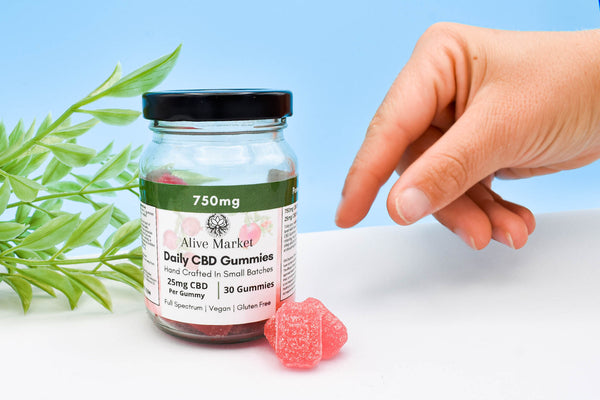

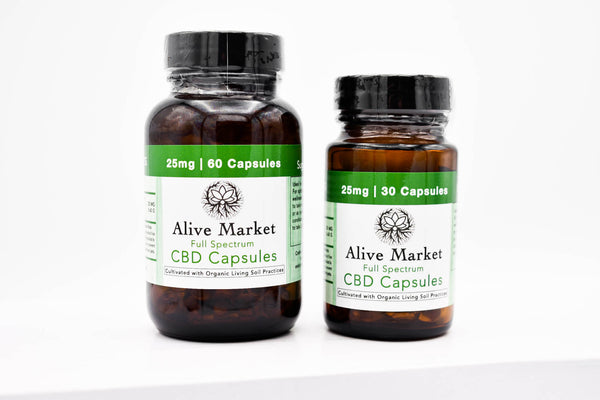
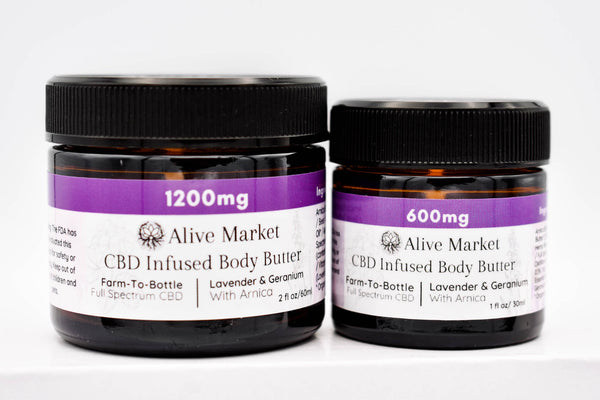

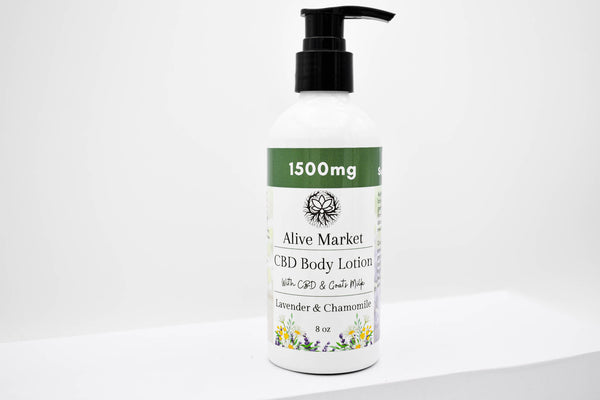
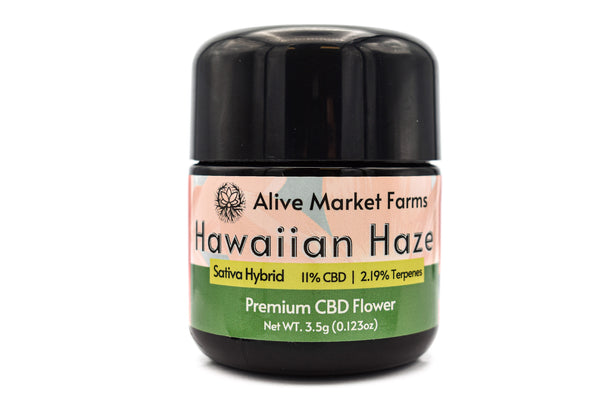
Conclusion
Muscle spasms can be a challenging and uncomfortable condition to deal with, but with the right treatment approach, relief is possible. Throughout this blog, we have explored various treatment options for muscle spasms, including stretching and massage, heat and cold therapy, hydration, prescription medications, physical therapy, and the potential use of CBD.
Stretching and massage techniques can help relax and lengthen the muscles, providing relief from spasms. Heat and cold therapy can offer temporary relief and reduce inflammation. Maintaining proper hydration and electrolyte balance is important in preventing spasms. Prescription medications may be necessary for severe cases, under the guidance of healthcare professionals. Physical therapy offers personalized treatment plans to improve muscle function. Additionally, CBD has gained attention for its potential therapeutic properties, but more research is needed to fully understand its effects on muscle spasms.
Remember, the choice of treatment depends on the underlying cause and severity of your muscle spasms. It's crucial to consult with a healthcare professional to determine the most suitable approach for your specific situation. They can provide personalized guidance and recommendations based on your condition and medical history.
As you embark on your journey to find relief from muscle spasms, it's important to stay informed and make informed decisions about your treatment options. Stay proactive in your approach by maintaining open communication with healthcare professionals, exploring various therapies, and monitoring your progress.
Ultimately, managing muscle spasms is a multifaceted process that may require a combination of approaches tailored to your unique needs. By taking proactive steps, seeking professional guidance, and remaining patient, you can increase your chances of finding effective relief and improving your quality of life.
We hope this blog has provided you with valuable insights and empowered you to make informed decisions regarding the treatment of muscle spasms. Remember, each individual's experience with muscle spasms may vary, so it's important to find what works best for you. Here's to a future with reduced muscle spasms and improved well-being!

